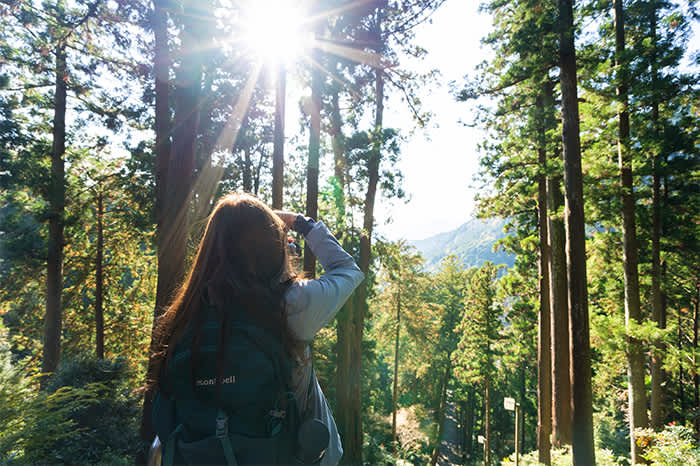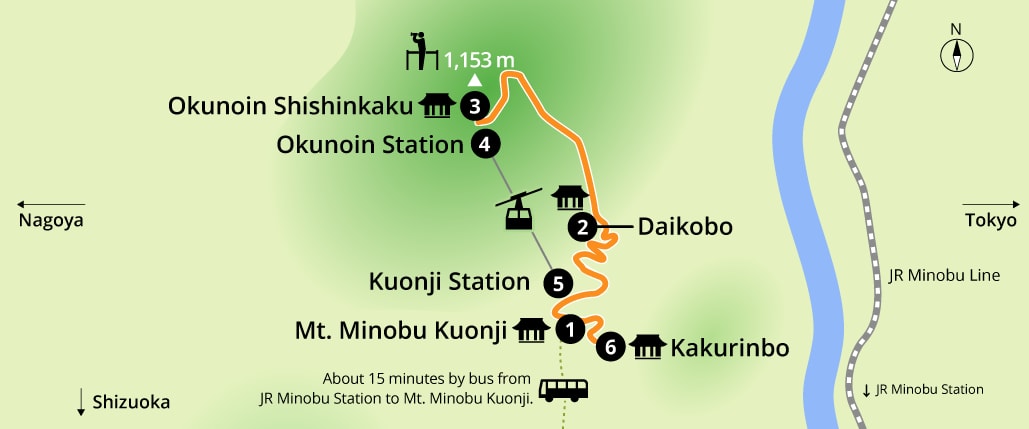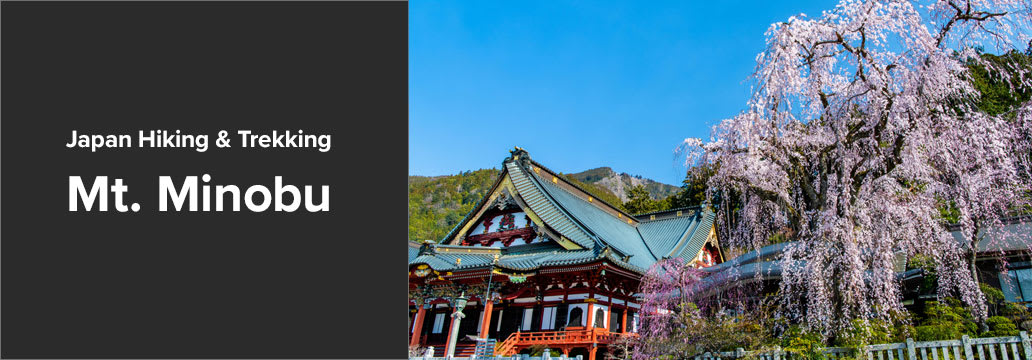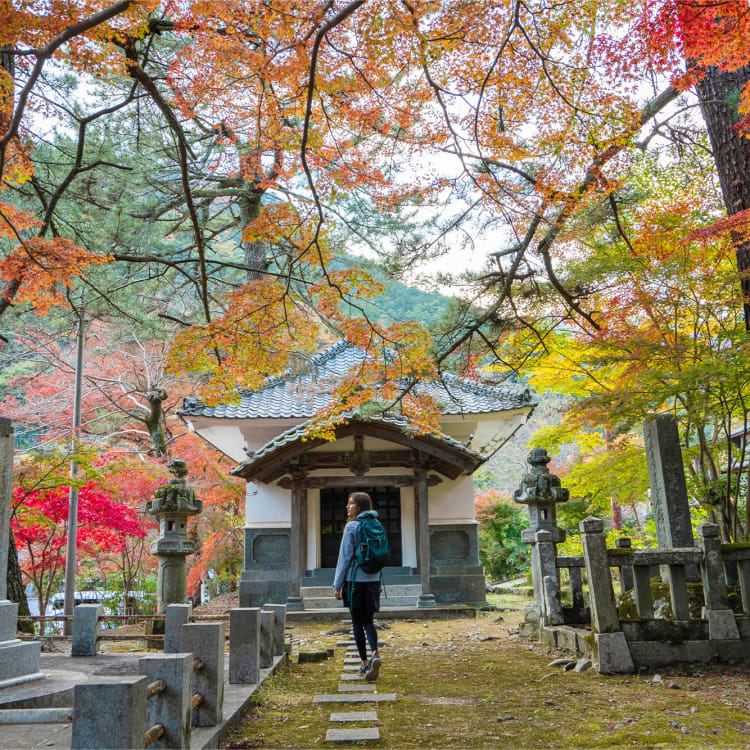
Travel Logs Hike and Unwind at Mt. Minobu
Mt. Minobu is just a stone’s throw from Tokyo, and offers a getaway packed with lush hiking trails, ancient temples, and panoramic views of some of Japan’s highest peaks. Whether you are an avid hiker, a spiritual seeker, or an urban dweller looking to unwind, this verdant mountain has something for everyone..
Hiking trails steeped in history
Mt. Minobu is a 1,153-meter-tall peak nestled between the Fuji River and the lofty mountains of the Southern Japanese Alps. It is home to Kuonji, a temple founded in 1281 as the headquarters of Nichiren, a branch of Buddhism established by the priest Nichiren (1222–1282). For this reason, you will find temples, statues, and various objects related to Buddhism along the path to the summit.
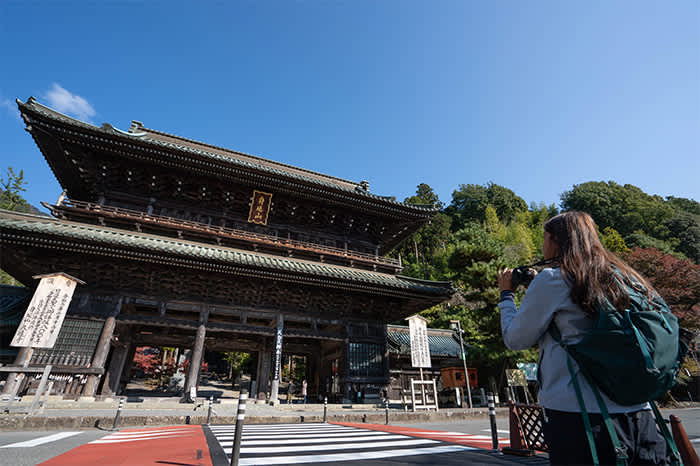
Mt. Minobu Kuonji Sanmon Gate

One of the many religious objects along the path
We began the hike at the enormous Sanmon Gate, the main gate to Kuonji , accompanied by a local guide. A cobbled path through the gate took us to a steep staircase flanked by towering cedars. Known as Bodai-tei, these 287 stone steps represent the path to enlightenment. The staircase itself is broken down into seven individual sections, symbolizing a seven-character mantra from the Lotus Sutra. The walk up serves as a great warm-up to the hike ahead. As we made our way, the guide pointed out the bright crimson berries of the nandina shrub, a plant long believed to have the power to dispel evil and misfortune.
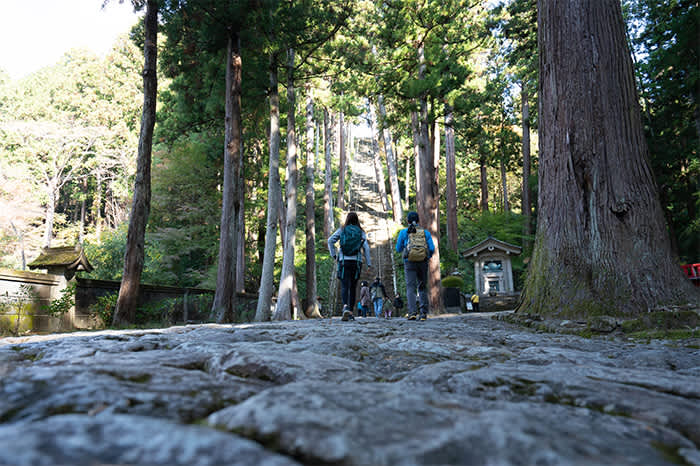
The hike begins…
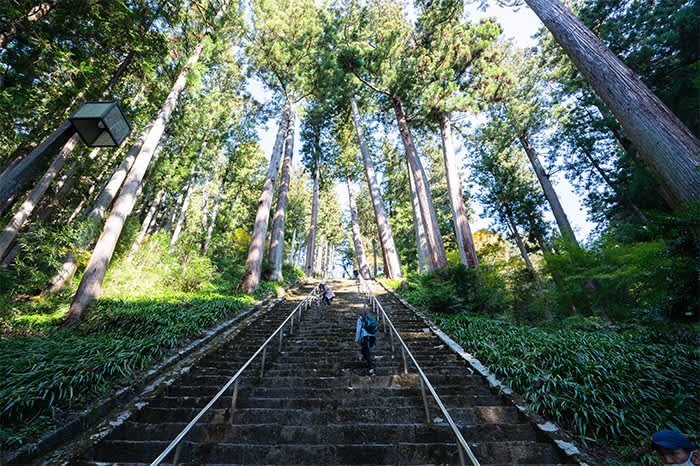
The Bodai-tei staircase
As we reached the final few steps, Kuonji Temple’s five-tiered pagoda came into view. “The temple complex is particularly beautiful in spring, when the weeping cherries bloom,” explained our guide. After offering a prayer, we made our way to the main hiking trail, which begins behind the temple building. The ascent to the summit from here takes about two and a half hours. Alternately, visitors can ride the Minobusan Ropeway , which travels from the precincts of Kuonji up to the Okunoin Shishinkaku Temple at Mt. Minobu’s summit.

Kuonji Temple’s five-tiered pagoda
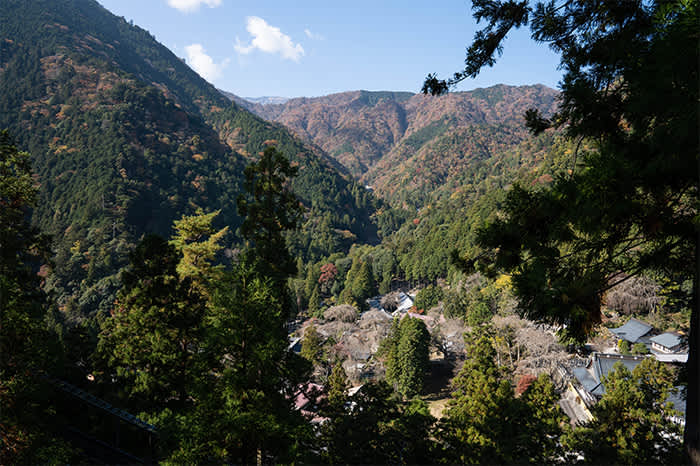
Forest-covered mountains
The trail to the summit is surrounded by thick groves of cedar, cypress, and maple. The tree canopy blocks the sunlight, keeping the path cool. We visited during autumn, when the foliage had started to take on shades of gold and vermillion. The fresh air, woody fragrances, and autumnal colors instilled in us a sense of tranquility and wonder.
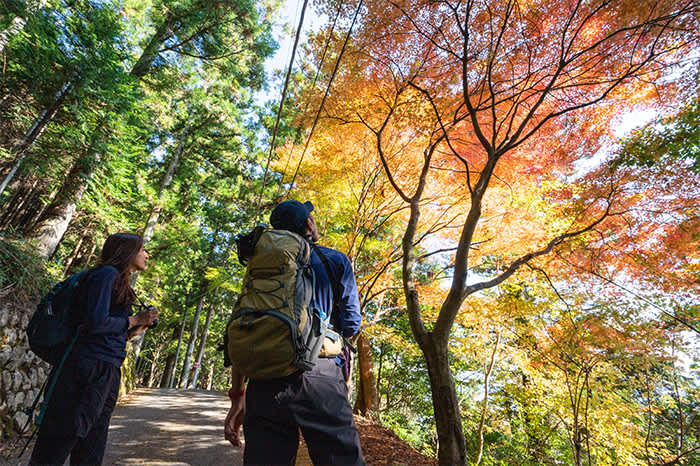
Beautiful autumn colors
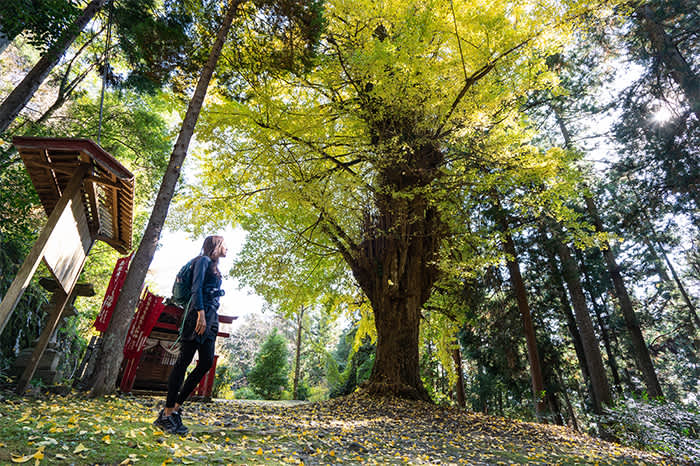
Feel the changing of the seasons
As you walk up the winding forest path, you will come across many smaller temples, each with its own distinct characteristics—some house golden Buddha statues, while others have elaborate engravings of dragons.
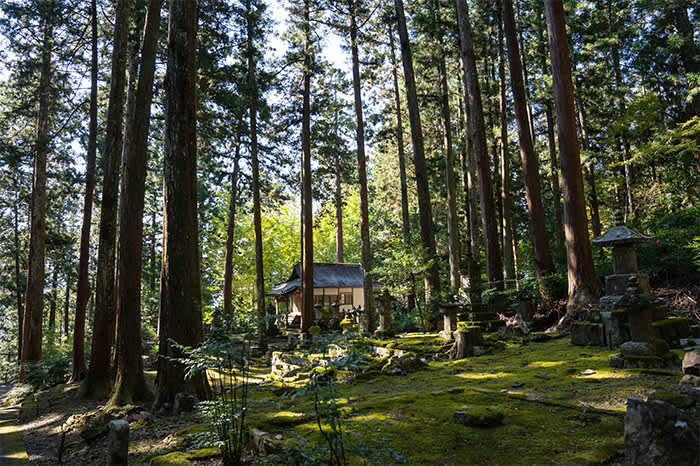
Many small temples can be found along the path
Hikers were few and far between during our ascent, with only the occasional bird call and rustling of leaves breaking the silence. Mt. Minobu is inhabited by creatures like the oriental dollarbird, recognized by its emerald-green plumage and orange beak. If you are lucky, you may even encounter deer, or Japanese serow—goat-like creatures that live in dense woodlands.
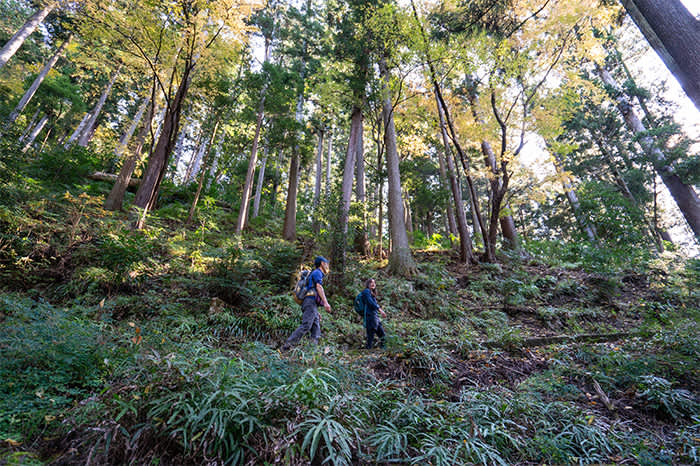
Lush greenery along the trail
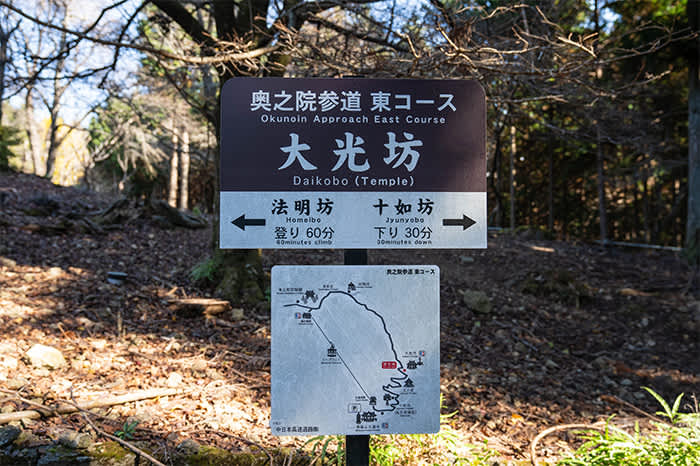
Various temples can be found along the way
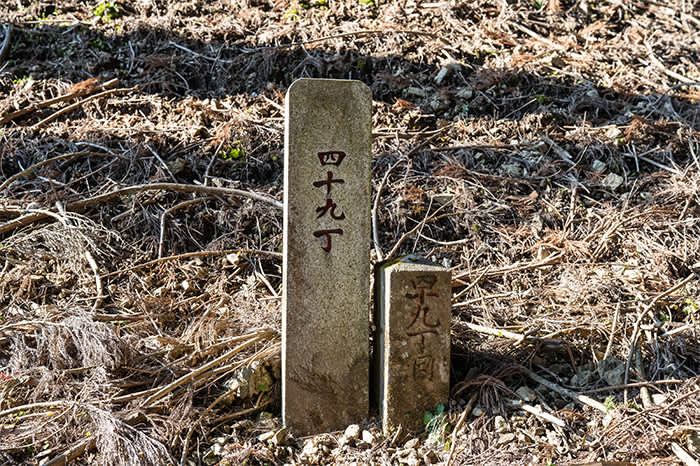
Trail markers make the path easy to follow
The trail is well-maintained and well-marked throughout, making it suitable for inexperienced hikers, and families with children. However, there are some steep and slippery sections, especially near the top, so it’s best to wear proper hiking boots.
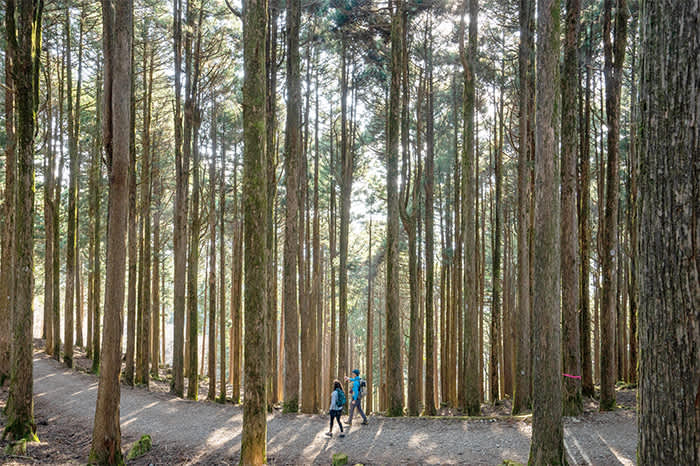
Towering cedar trees
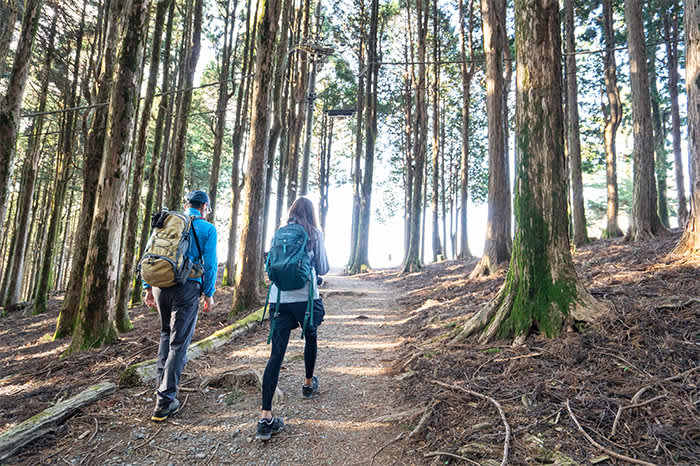
The path to the summit
After a two-and-a-half-hour ascent, we found ourselves in the mountaintop precincts of Okunoin Shishinkaku. We were particularly impressed by the enormous 700-year-old cedar tree in the temple precinct, which is believed to have been planted by Nichiren. Revered as a symbol of long life, the ancient tree added to the mountain’s mystical atmosphere.
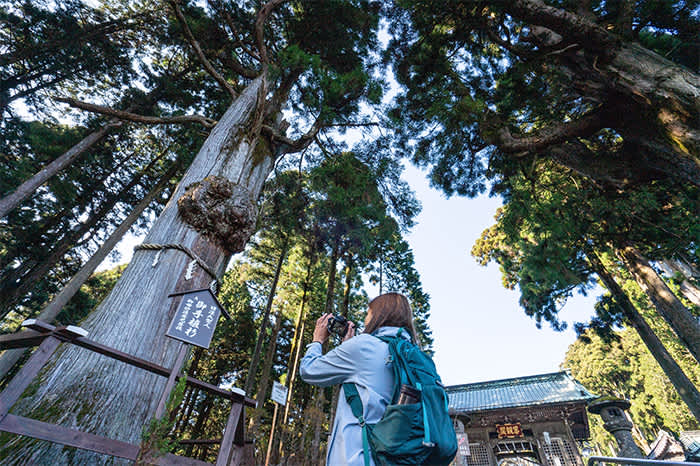
Ancient cedar trees in Okunoin Shishinkaku Temple
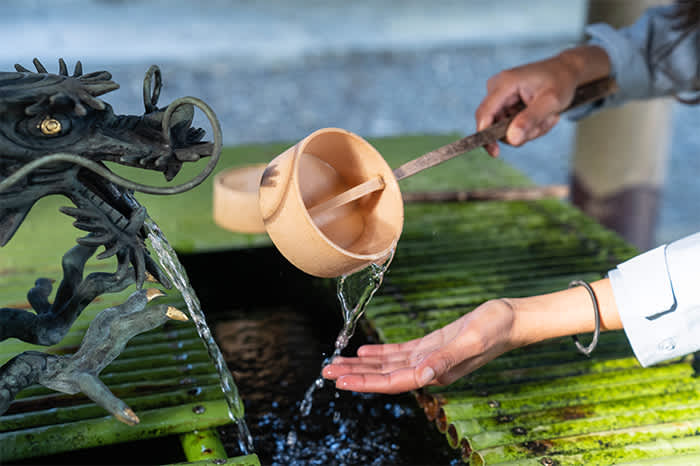
Purifying my hands at the temizuya water ablution pavilion in the Okunoin
There are numerous observation decks around the summit. From the deck next to the Ropeway Sancho Station, we were swept away by views of Mt. Fuji towering majestically over the landscape, and the Fuji River in the valley below. Trimmed with clouds and capped with snow, Japan’s most iconic mountain looked particularly beautiful. Twice a year, in mid-March and late September, you can see the sun rising over the tip of Mt. Fuji. This natural phenomenon is aptly called “diamond Fuji” for the way the sun glimmers over the peak. The ropeway runs early in the morning during these periods to give visitors a chance to catch the sunrise.
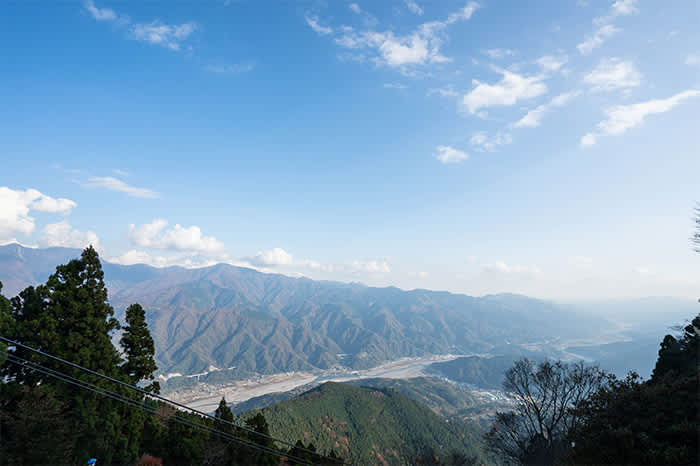
Breathtaking mountain views
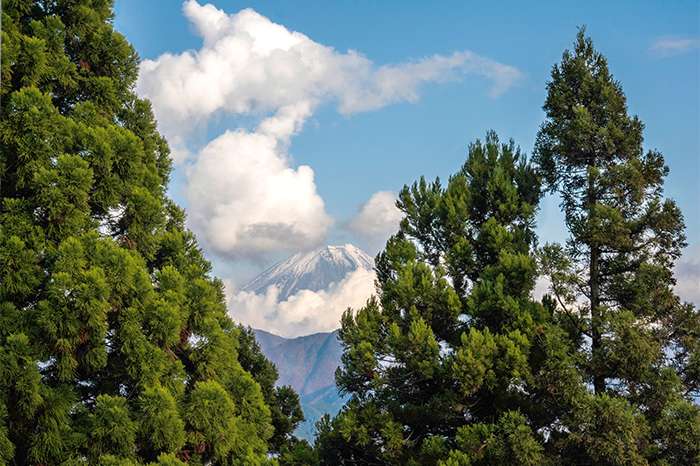
Mt. Fuji can be observed from the summit on clear days
The north deck presents a different kind of scenery—we enjoyed sweeping views of prominent peaks of the Southern Japanese Alps such as Mt. Kita (3,193 m) and Mt. Aino (3,190 m). “This part of Japan has a distinct topography because it's where three tectonic plates meet,” said our guide, pointing to the commanding landscape ahead. Thanks to its location, Mt. Minobu serves as a great spot to appreciate Japan’s dramatic mountainous terrain.
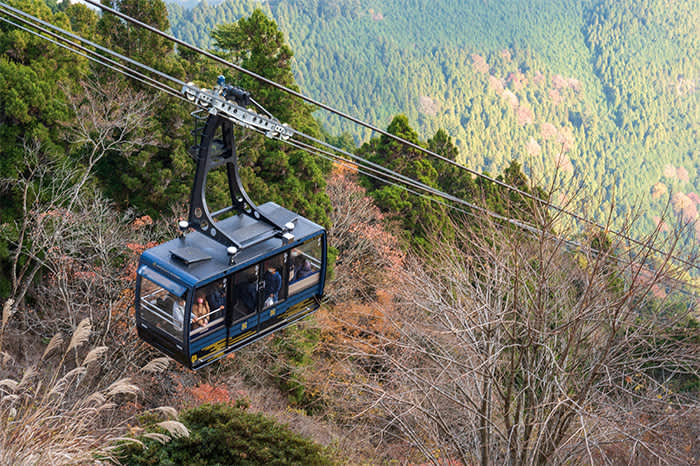
Access the summit via ropeway in just under 10 minutes
Avid hikers have the option of extending the hike to the nearby peak of Mt. Shichimen (1,982 m), another spiritual destination. You will have to set aside an additional seven hours to ascend this mountain, so consider an overnight stay in Akasawa Village. It is located in the western foothills of Mt. Minobu, and is known for its cobbled footpaths and rustic, traditional houses.
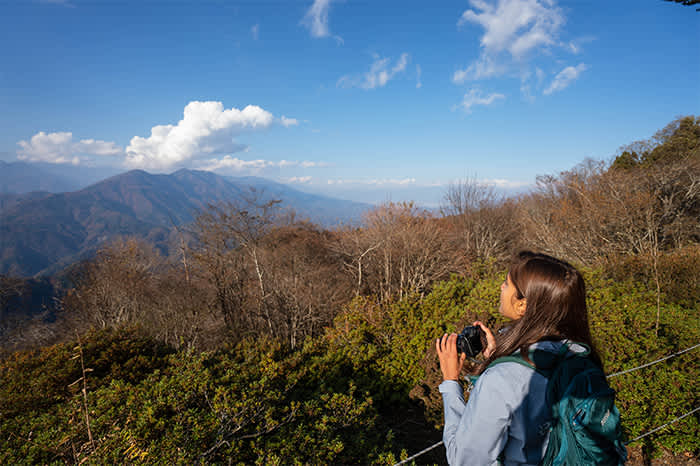
Panoramic views of the Southern Japanese Alps

Dramatic mountain views await
After an exhilarating hike, reward yourself with local treats at one of the food stalls near the summit ropeway station. We tried steamed buns stuffed with yuba (tofu skin), and rice cakes made with bamboo charcoal. While bamboo charcoal may seem like an unusual ingredient, it enhanced the delicately sweet flavor of the rice cakes. Yuba is a regional specialty used in a wide variety of dishes, so be sure to try it when you’re visiting Mt. Minobu.
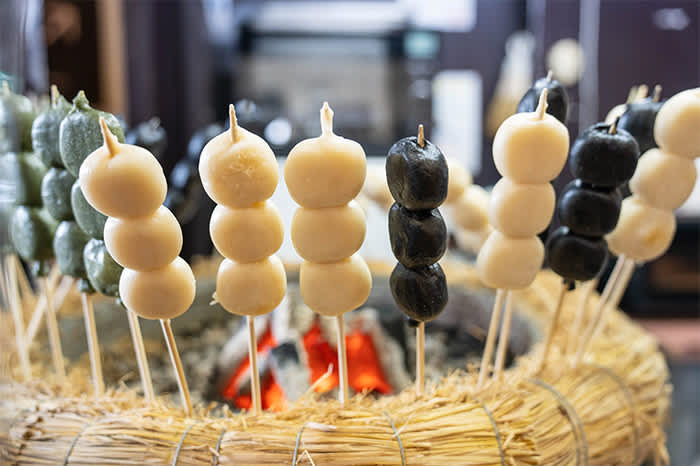
Rice cakes
Temple lodgings rich in tradition
Stay in temple lodgings called shukubo to further immerse yourself in Mt. Minobu’s spiritual traditions. There are over 20 in the area, and we made our way to Kakurinbo , a 550-year-old shukubo tucked away in the foothills of the mountains. It is one of the oldest in the region.
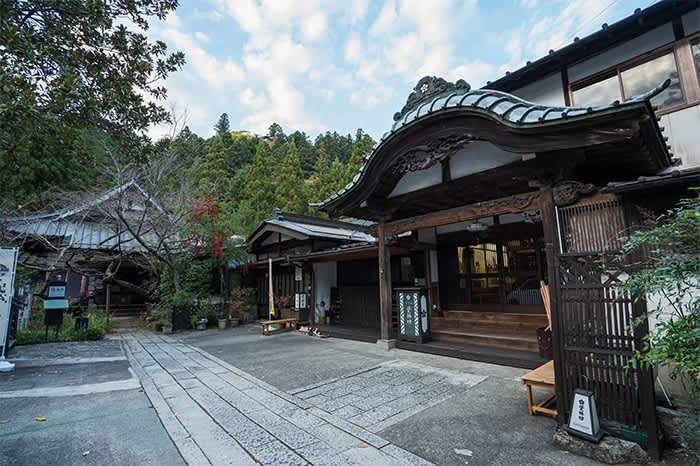
Kakurinbo
The rooms in this rustic and charming establishment are traditional, with tatami floors and shoji paper doors. The grounds contain a picturesque garden with a carp pond, designed by a Zen master who was also a well-regarded landscape gardener. The traditional architecture is also complemented by the artwork and ornate kimonos that decorate the walls.
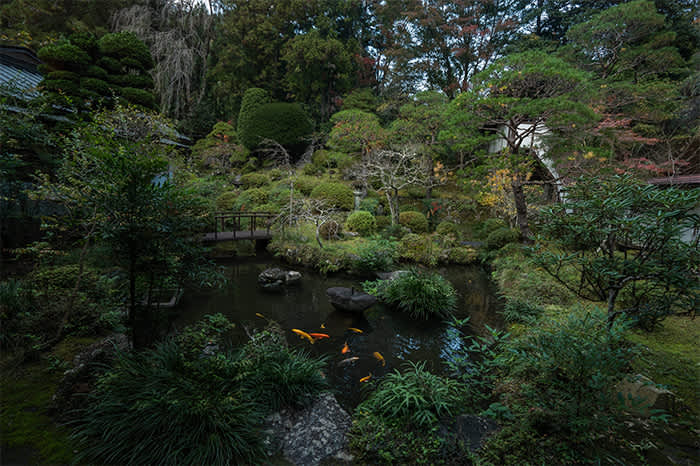
Kakurinbo’s garden
Kakurinbo offers a range of cultural and spiritual experiences. Choose from activities like morning yoga, sutra chanting, and tea ceremony to immerse yourself in Mt. Minobu’s spiritual traditions.
We decided to try shakyo—hand-copying Buddhist sutras. It was a mindful exercise, requiring us to concentrate and be present. We were provided instructions from a monk, along with a calligraphy kit that came with tracing paper, ink, and a brush. The experience was tailored to our levels, so even without prior calligraphy experience, we were able to feel at ease.
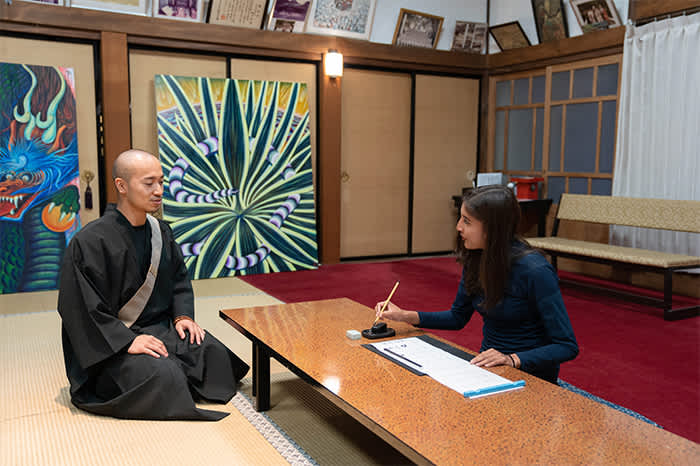
A monk provides instructions
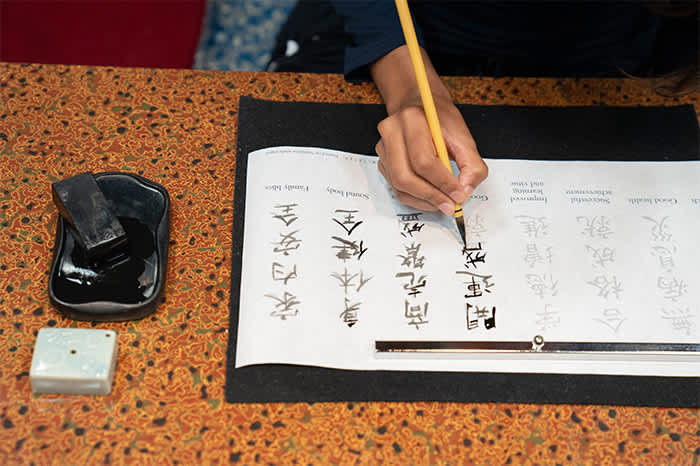
Practicing shakyo
Kakurinbo is known for its elaborate traditional Buddhist cuisine (shojin ryori), typically free from meat and fish. Luckily, we were seated in the dining hall that overlooks the garden. We were treated to dishes such as homemade natto (fermented beans), yuba, fried mushrooms, and tomato stew. Dessert was soy ice cream with toppings of fresh, seasonal fruits such as kiwi and peach. The menu changes seasonally, and everything is painstakingly prepared from local ingredients by the proprietress. You can also choose to reward yourself after a hike with a glass of the temple’s own craft beer, served in a glass shaped like Mt. Fuji.

A delicious meal at Kakurinbo
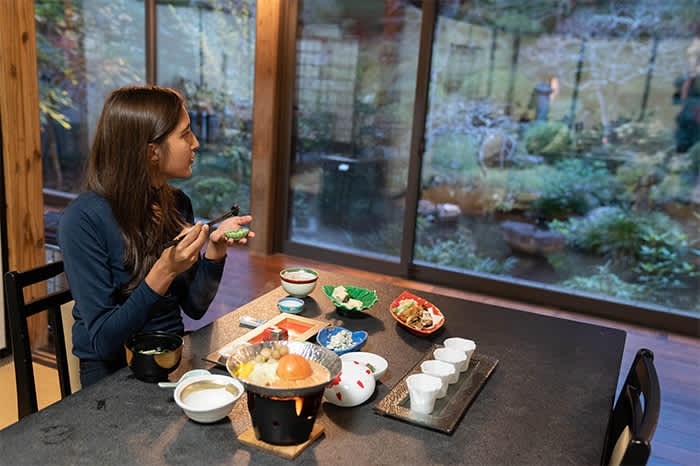
Enjoy dinner with views of the garden
The hike up Mt. Minobu was a rejuvenating experience. The lush autumnal forest and plethora of historic religious sites gave us a chance to reconnect with nature, and dive into the area’s spiritual traditions. Being accompanied by a guide further added to the experience, as we were provided with fascinating insights into the area.
The region has even more to offer. Stay overnight to explore other surrounding mountains, forest trails, and historic sites. Nearby hot-spring resorts such as Shimobe Onsen are great for unwinding after a day of hiking and activities. For a hiking destination suitable for all levels, filled with cultural discoveries, look no further than Mt. Minobu.
